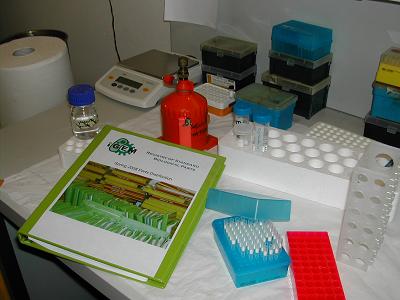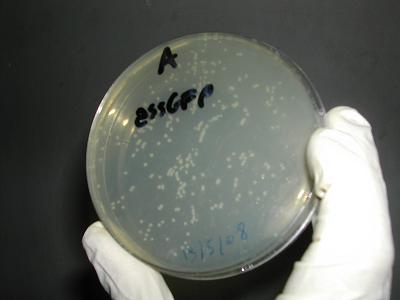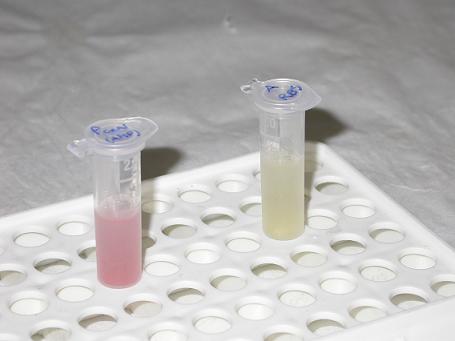Team:UNIPV-Pavia/Notebook/Week1
From 2008.igem.org
(Difference between revisions)
| (13 intermediate revisions not shown) | |||
| Line 22: | Line 22: | ||
<br><br> | <br><br> | ||
| - | {|align="center" cellpadding=" | + | {|align="center" cellpadding="30" |
!|[[Team:UNIPV-Pavia/Notebook/Week1|Week 1]] | !|[[Team:UNIPV-Pavia/Notebook/Week1|Week 1]] | ||
!|[[Team:UNIPV-Pavia/Notebook/Week2|Week 2]] | !|[[Team:UNIPV-Pavia/Notebook/Week2|Week 2]] | ||
| + | !|[[Team:UNIPV-Pavia/Notebook/Week3|Week 3]] | ||
| + | !|[[Team:UNIPV-Pavia/Notebook/Week4|Week 4]] | ||
| + | !|[[Team:UNIPV-Pavia/Notebook/Week5|Week 5]] | ||
| + | !|[[Team:UNIPV-Pavia/Notebook/Week6|Week 6]] | ||
| + | !|[[Team:UNIPV-Pavia/Notebook/Week7|Week 7]] | ||
| + | |- | ||
| + | !|[[Team:UNIPV-Pavia/Notebook/Week8|Week 8]] | ||
| + | !|[[Team:UNIPV-Pavia/Notebook/Week9|Week 9]] | ||
| + | !|[[Team:UNIPV-Pavia/Notebook/Week10|Week 10]] | ||
| + | !|[[Team:UNIPV-Pavia/Notebook/Week11|Week 11]] | ||
| + | !|[[Team:UNIPV-Pavia/Notebook/Week12|Week 12]] | ||
| + | !|[[Team:UNIPV-Pavia/Notebook/Week13|Week 13]] | ||
| + | !|[[Team:UNIPV-Pavia/Notebook/Week14|Week 14]] | ||
| + | |- | ||
| + | !|[[Team:UNIPV-Pavia/Notebook/Week15|Week 15]] | ||
| + | !|[[Team:UNIPV-Pavia/Notebook/Week16|Week 16]] | ||
| + | !|[[Team:UNIPV-Pavia/Notebook/Week17|Week 17]] | ||
| + | !|[[Team:UNIPV-Pavia/Notebook/Week18|Week 18]] | ||
| + | !|[[Team:UNIPV-Pavia/Notebook/Week19|Week 19]] | ||
| + | !|[[Team:UNIPV-Pavia/Notebook/Week20|Week 20]] | ||
| + | !|[[Team:UNIPV-Pavia/Notebook/Week21|Week 21]] | ||
| + | |- | ||
| + | !|[[Team:UNIPV-Pavia/Notebook/Week22|Week 22]] | ||
| + | !|[[Team:UNIPV-Pavia/Notebook/Week23|Week 23]] | ||
| + | !|[[Team:UNIPV-Pavia/Notebook/Week24|Week 24]] | ||
|} | |} | ||
| Line 79: | Line 104: | ||
*We transformed 60 µl of TOP10 E. coli with 4 µl of DNA in TE for all 22 parts, plated transformed bacteria and incubated overnight at 37°C. | *We transformed 60 µl of TOP10 E. coli with 4 µl of DNA in TE for all 22 parts, plated transformed bacteria and incubated overnight at 37°C. | ||
| - | + | ||
| - | |[[Image:pv_22plates.jpg|thumb|300px|left|Our 22 parts at 37°C]] | + | {| |
| - | < | + | |<div style="padding:20px;">[[Image:pv_22plates.jpg|thumb|300px|left|Our 22 parts at 37°C]]</div> |
| + | |} | ||
*We used LB medium previously prepared, with the suitable antibiotic added. | *We used LB medium previously prepared, with the suitable antibiotic added. | ||
| Line 206: | Line 232: | ||
*For this reason we decided to re-perform plasmid extraction with a higher culture volume: 9 ml instead of 5 ml. Anyway, we are waiting to receive QIAGEN miniprep kit in order to perform more efficient plasmid purifications. | *For this reason we decided to re-perform plasmid extraction with a higher culture volume: 9 ml instead of 5 ml. Anyway, we are waiting to receive QIAGEN miniprep kit in order to perform more efficient plasmid purifications. | ||
| - | *We took 15 µl from all our 16 glycerol stocks and infected | + | *We took 15 µl from all our 16 glycerol stocks and infected 9 ml LB + suitable antibiotic for each part we had. We incubated the 9 ml cultures at 37°C overnight. |
<br><br> | <br><br> | ||
| Line 219: | Line 245: | ||
*Quantification of plasmid concentration showed that 9 ml cultures yielded higher amounts of plasmid than using 5 ml cultures (100-150ng/µl instead of 40-80ng/µl). | *Quantification of plasmid concentration showed that 9 ml cultures yielded higher amounts of plasmid than using 5 ml cultures (100-150ng/µl instead of 40-80ng/µl). | ||
| - | *Tissue Engineering | + | *Center for Tissue Engineering (CIT) meeting: we explained our first results to CIT members. |
| + | <br> | ||
Latest revision as of 21:24, 26 October 2008
Notebook
| Week 1 | Week 2 | Week 3 | Week 4 | Week 5 | Week 6 | Week 7 |
|---|---|---|---|---|---|---|
| Week 8 | Week 9 | Week 10 | Week 11 | Week 12 | Week 13 | Week 14 |
| Week 15 | Week 16 | Week 17 | Week 18 | Week 19 | Week 20 | Week 21 |
| Week 22 | Week 23 | Week 24 |
Week 1: 05/19/08 - 05/23/08
05/19/08
- Let’s start our IGEM 2008 experience! At first, we broke the punch tool…:)
- We used a scalpel to cut and resuspend the following 22 paper spots:
|
|
- We used tweezers to put the cut paper into tubes containing 10 μl of warmed TE buffer.
- We transformed 60 µl of TOP10 E. coli with 4 µl of DNA in TE for all 22 parts, plated transformed bacteria and incubated overnight at 37°C.
- We used LB medium previously prepared, with the suitable antibiotic added.
05/20/08
- After overnight incubation, the following 14 plates showed colonies:
|
|
- While the following plates did not:
| BBa_I14032 | BBa_R0051 | BBa_C0161 | BBa_C0078 |
| BBa_C0179 | BBa_I15008 | BBa_I15009 | BBa_I15010 |
- Plate containing BBa_J23100 showed red colonies, as we expected: this part is inserted into plasmid BBa_J61002 which places the RFP downstream of the inserted part, which is a constitutive promoter.
- We picked up one colony from every working plate to grow 5 ml cultures of transformed bacteria overnight.
- We re-transformed 60 µl of TOP10 with the remaining 6 µl of DNA in TE for BBa_I14032, BBa_R0051, BBa_I15008, BBa_I15009, BBa_I15010, BBa_C0161, BBa_C0078, BBa_C0179.
- We plated transformed bacteria and incubated them at 37°C overnight.
- We ordered primers VF2 and VR. We also ordered new TOP10 stocks to Invitrogen, because our stock was about to run out.
05/21/08
- Only BBa_I15009 and BBa_C0078 plates showed colonies and for the remaining 6 plates there were no colonies again.
- We picked up one colony from BBa_I15009 and BBa_C0078 plates to grow 5 ml cultures of transformed bacteria overnight.
- We re-cut paper spots for BBa_R0051, BBa_I14032, BBa_I15008, BBa_I15010, BBa_C0161, BBa_C0179 and resuspended them again in 10 µl of warmed TE buffer.
- We repeated the transformation for these 6 parts using 4 µl of DNA in TE.
- We plated transformed bacteria and incubated them at 37°C overnight.
- We prepared 14 glycerol stocks taking 800 µl from 5 ml cultures containing:
|
|
- We performed plasmid purification for these 14 parts.
05/22/08
- For the third time, there were no colonies in the 6 plates.
- We contacted IGEM Headquarters to explain our problem for these 6 parts. We thank Meagan Lizarazo for her kind attention! IGEM Headquarters will send us the 6 parts.
- We tried to transform these 6 parts for the last time, using the remaining 6 µl of DNA in TE. We used our last 6 TOP10 stocks.
- We prepared 2 glycerol stocks taking 800 µl from 5 ml cultures containing BBa_I15009 and BBa_C0078.
- We performed plasmid purification for these 2 parts.
- We had QIAGEN mini kit at our disposal, instead of QIAGEN miniprep kit for plasmid purification. We noticed that QIAGEN mini kit performed a low yield extraction (40-80ng/µl instead of 200-500ng/µl normally yielded by miniprep kit): quantified plasmid concentrations measured with NanoDrop spectrophotometer were very low.
- For this reason we decided to re-perform plasmid extraction with a higher culture volume: 9 ml instead of 5 ml. Anyway, we are waiting to receive QIAGEN miniprep kit in order to perform more efficient plasmid purifications.
- We took 15 µl from all our 16 glycerol stocks and infected 9 ml LB + suitable antibiotic for each part we had. We incubated the 9 ml cultures at 37°C overnight.
05/23/08
- For the fourth time, there were no colonies in the 6 plates. We decided to wait for the 6 paper spots from IGEM Headquarters, instead of performing another cut/transformation.
- We prepared 14 glycerol stocks taking 800 µl from our 10 ml cultures.
- We performed plasmid purification for all cultures.
- Quantification of plasmid concentration showed that 9 ml cultures yielded higher amounts of plasmid than using 5 ml cultures (100-150ng/µl instead of 40-80ng/µl).
- Center for Tissue Engineering (CIT) meeting: we explained our first results to CIT members.
 "
"



